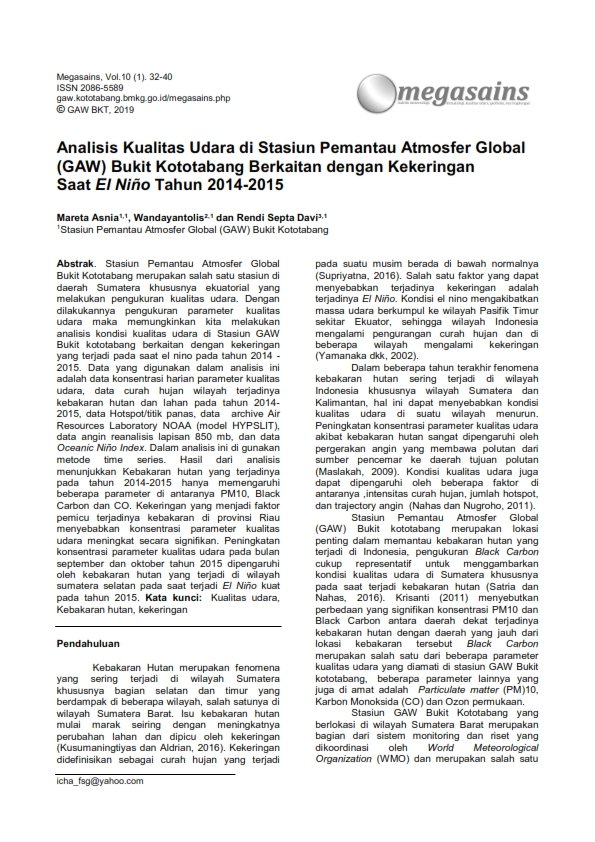Air Quality Analysis at Global Atmospheric Monitoring Stations (GAW) Kototabang Hill Associated with Drought During El Niño 2014-2015
Main Article Content
Abstract
The Bukit Kototabang Global Atmospheric Monitoring Station is one of the stations in the Sumatra region, especially the equator, that measures air quality. By measuring air quality parameters, it is possible for us to analyze the air quality conditions at GAW Bukit Kototabang Station in relation to the drought that occurred during El Niño in 2014 -2015. The data used in this analysis are daily concentration data on air quality parameters, rainfall data in areas where forest and land fires occurred in 2014-2015, Hotspot data, NOAA Air Resources Laboratory archive data (HYPSLIT model), 850 mb layer reanalysis wind data, and Oceanic Niño Index data. In this analysis, the time series method is used. The results of the analysis show that forest fires that occurred in 2014-2015 only affected several parameters, including PM10, Black Carbon and CO. Drought, which is a triggering factor for fires in Riau province, causes the concentration of air quality parameters to increase significantly. The increase in air quality parameter concentrations in September and October 2015 was influenced by forest fires that occurred in the South Sumatra region during a strong El Niño in 2015.
Article Details

This work is licensed under a Creative Commons Attribution-NonCommercial 4.0 International License.
The author is willing to retain the copyright and grant journal rights to the first publication with works that are simultaneously under license the Creative Commons Attribution-NonCommercial-NoDerivatives 4.0 International. It allowing the others to share the work with recognition of the author's work and the initial publication in this journal.
Authors can enter into separate additional contractual arrangements for the non-exclusive distribution of published versions of journal works (for example, posting them to institutional repositories or publishing them in a book), with recognition of the initial publications in this journal.
Authors are permitted and encouraged to send their work online (for example, in their institutional repositories or websites) before and during the submission process because it can lead to productive exchanges, as well as previous and larger citations of published works.

